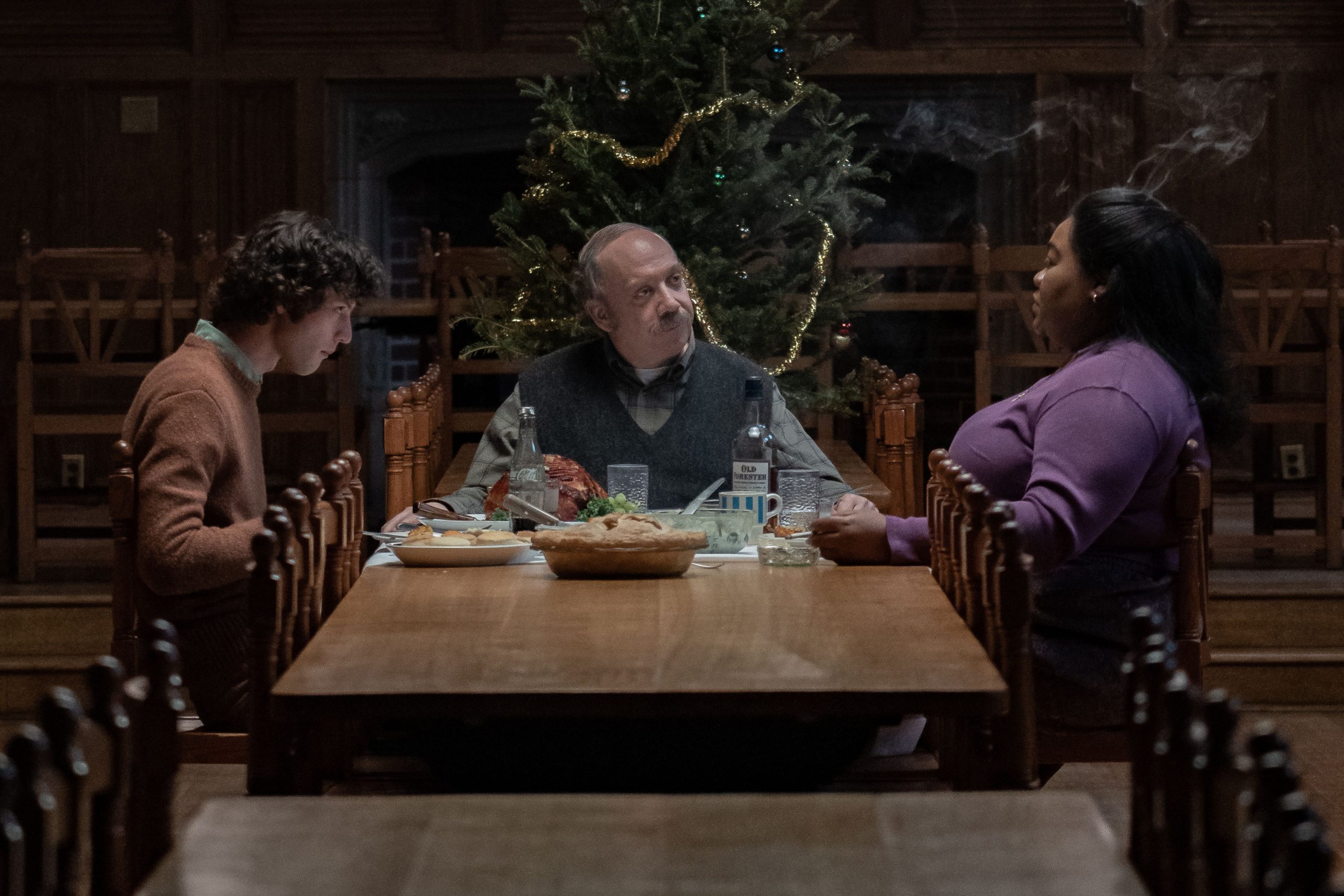When Alexander Payne’s “The Holdovers” begins its opening credits you know something is up. The whole intro from the MPAA ratings warning to the Focus Features logo has been designed to indicate this is the very early 1970s. Right away the tone is set.
“The Holdovers” indeed takes place in 1970-71 at a boarding school in Massachusetts named Barton that has been there for a hundred years. Rich kids have been sent there by their parents who are busy traveling, divorcing, or living it up. Helicopters are sent for the kids if they need to be seen. The kids themselves aren’t great students, but they’re “legacy” with buildings donated by their families.
Paul Hunham, played with meticulous irascibility and charm by Paul Giamatti, has been there pretty much his whole life. He was a student who graduated to Harvard and then returned as a professor. He’s had no other life, has no family or personal relationships. He’s dying there even if he doesn’t know it. At Christmas 1970, Hunham is assigned to watch, over the holidays, the boys whose parents won’t retrieve them. They’re the holdovers.
This is not “Dead Poets Society” or “Mr. Holland’s Opus.” Payne works for the first time with a screenwriter named David Hemingson who seems to have some knowledge of the academic world. Giamatti comes at the role with some life history. His father, the late Bart Giamiatti, was president of Yale University.
Mr. Hunham’s holdovers are eventually whittled down to two: Da’Vine Joy Randolph as Mary, the school cook whose son graduated from the school and immediately died in Vietnam; and Angus Tully, a junior played by Dominic Sessa. This trio is the center of the film and they should all have Oscar noms and be SAG Best Ensemble candidates. Their work together is heartbreaking and gentle and superior.
“The Holdovers” is Payne’s homage to movies like “The Graduate” and “Love Story,” in tone and to famous novels like “Catcher in the Rye” and “A Separate Peace,” among others. Barton at Christmas is covered in snow that looks like cake icing, and lingers under smoky gray skies all day. It’s always cold — “fifteen degrees,” as Angus notes. There’s a lot of melancholy.
Sometimes Payne looks like he’s actually following shots from the movies I mentioned. “The Graduate” hovers in camera work and Simon & Garfunkel type songs. When Hunham comes out of the school to reconnoiter a snowy field, Payne swings in and out with the same energy as Mike Nichols filming Benjamin pounding on the church windows above Elaine’s wedding. In the dorms, the boys could easily be Holden and his pals from “Catcher.” The boys seem like they will go on to punch the shoulders of Oliver and his friends at Harvard in “Love Story.”
But Hemingson’s screenplay with Payne’s touches do more than just hang around the school concentrating on student and teacher. The addition of Mary the cook and her backstory adds genuine poignancy. Hemingson has a nice way of exploring all their relationships among each other, not to mention throwing in Carrie Preston as a very likable local who works at the school and comes to care for all three of the principals.
Payne always has an eye for small towns in movies like “Sideways,” “About Schmidt,” and “Nebraska.” He gets the pace, and the silences. His movies are no in no hurry. They feel like folk stories told on a front porch. “The Holdovers” couldn’t be more gracious, even though it has plenty of laughs. It’s also a kind of sophisticated filmmaking rarely seen anymore in non-‘event’ movies.
“The Holdovers” premiered at the Toronto Film Festival to great acclaim and played last night to a full, very appreciative house at the Hamptons Film Festival. It opens in theaters on October 26th and you have no reason not to see it ASAP.

